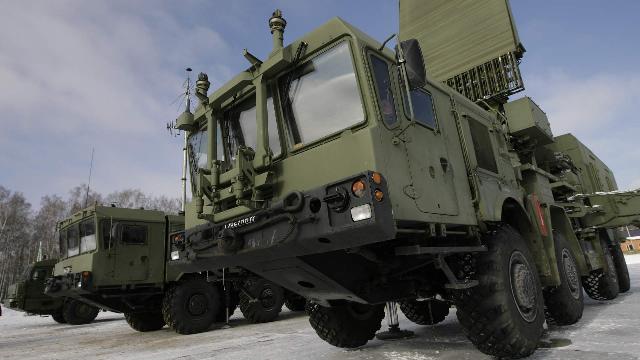The detection range of enemy MLRS has increased fivefold
Russian troops began using new 96L6 artillery reconnaissance systems in the SVO zone. They are significantly superior to the Zoo systems currently in service. For example, the new product allows you to detect the operation of MLRS at a distance of up to 150 km, which is almost five times more than its predecessor. Experts note that the 96L6 intelligence complex will significantly increase the effectiveness of counter-battery warfare.
With an accuracy of several meters
The 96L6 mobile artillery radar reconnaissance systems began to arrive in the artillery brigades operating in the SVO zone. Their purpose is to detect firing positions of barrel artillery, MLRS and mortars. They are already actively involved in the counter-battery struggle. The complexes allow detecting the work of barrel artillery and mortars at a distance of 70 km, and MLRS launches within a radius of 150 km, sources in the Russian Defense Ministry told Izvestia.
The new radar is significantly superior in its characteristics to the existing counter-battery warfare systems. For example, the Zoo-1 reconnaissance and fire control system is capable of detecting MLRS rockets within a radius of 35 km, which is almost five times less than that of the new machines. For detecting volleys of cannon artillery and mortars, this figure is even lower. For example, 82-120 mm Zoo mortars can detect up to 17 km away.
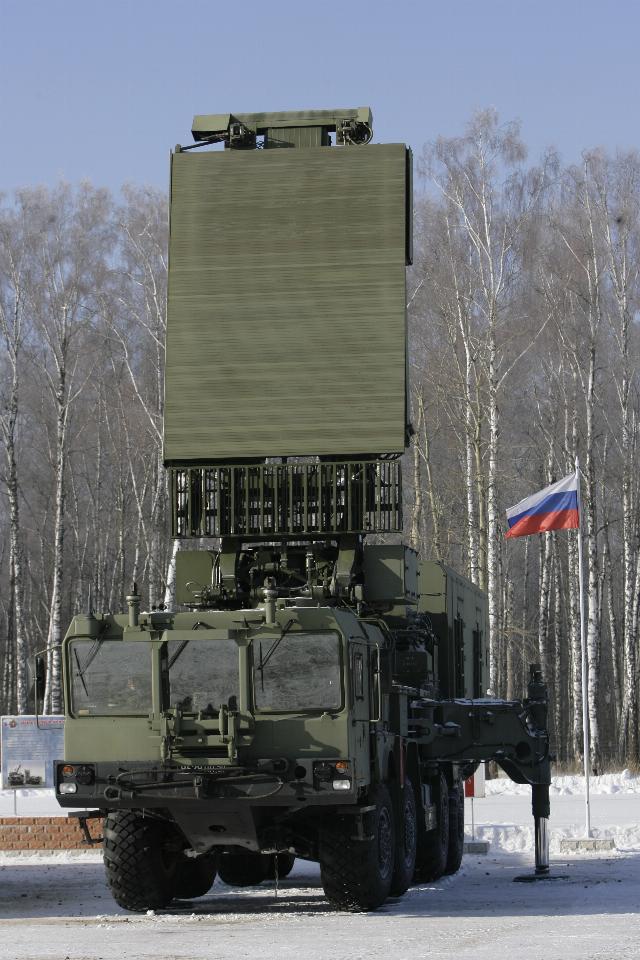
Image source: Photo: IZVESTIA/Gleb Shchelkunov
The 96L6 reconnaissance radar system is mounted on a four-axle chassis. A full-turn overall radar antenna and a container with all necessary equipment are located on its base.
The radar can detect the launch point of projectiles or MLRS rockets with an accuracy of up to several meters. Having discovered it, the radar crew transmits the coordinates of the enemy's positions to the command post of the unit responsible for counter-battery warfare. Then an artillery or MLRS strike is launched.
It is also important that the 96L6 complex is very resistant to the effects of enemy electronic warfare (EW).
This radar system is well known as an anti-aircraft system, Dmitry Kornev, editor of the Military Russia website, told Izvestia.
— It has a well-established name — the all—altitude detector, - he noted. — It was created to work as part of the S-350 Vityaz and S-400 Triumph anti-aircraft missile systems. It can also enhance the S-300 air defense systems of several modifications. One such station can observe and guide 100 trajectories of various targets.
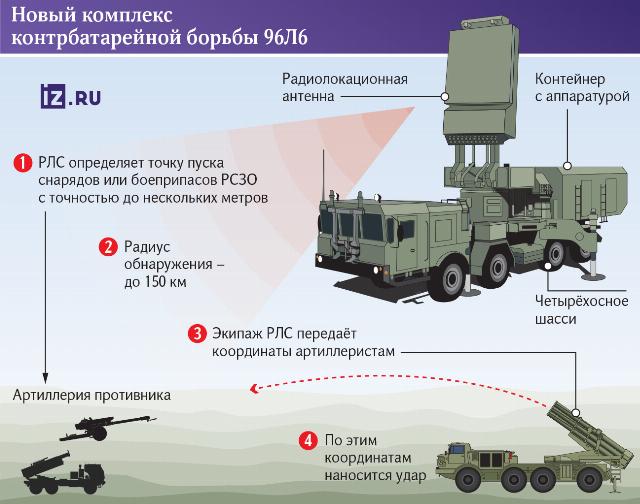
The expert suggested that, first of all, our military-industrial complex had to refine the system for issuing information about detected objects to artillery and missile batteries, which could quickly engage in counter-battery warfare.
— This universalization allows you to significantly save time, as well as the resources needed for the manufacture and development of new systems, — Dmitry Kornev explained. — The system was created in the 2010s and has already proven itself well in the air defense forces. The fact that, after improvements, it can be effectively used for counter-battery warfare suggests that the money invested in the development of air defense is now beginning to work for other branches of the armed forces.
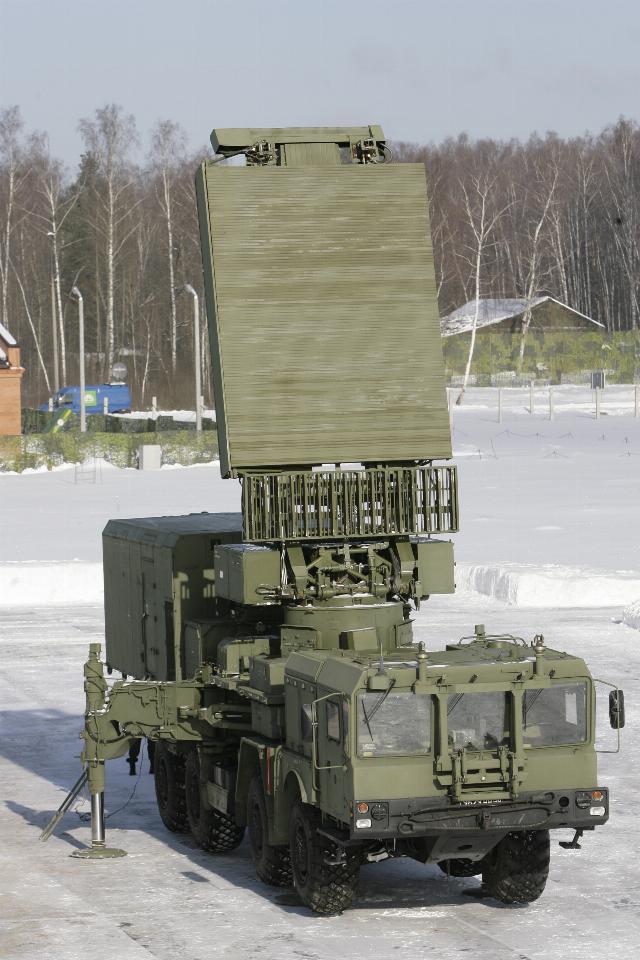
Image source: Photo: IZVESTIA/Gleb Shchelkunov
The 96L6 radar is large, it requires a powerful chassis, military expert Yuri Lyamin told Izvestia.
"Its capabilities allow you to see cannon artillery shells, MLRS, rocket launches and aerial objects," he said. — The location of artillery, mortar or MLRS positions is detected by the station along the trajectory of the ammunition, which it sees perfectly. The accuracy should be very good. Such use of a powerful radar is a logical step. The production of several highly specialized radars is always more expensive.
The expert believes that the range of MLRS salvo detection from a distance of 150 km will allow HIMARS MLRS to be detected and destroyed.
"These vehicles have rockets with a range of 80-90 km," he recalled. — It turns out that our radar will be able to detect them even deep in the rear, from where they prefer to fire.
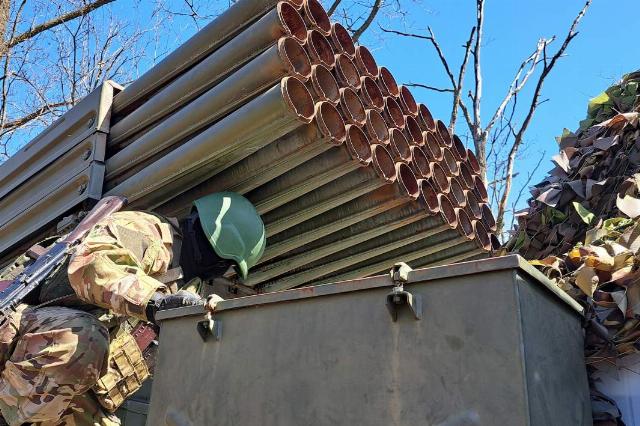
Photo: IZVESTIA/Dmitry Astrakhan
Image Source: iz.ru
Due to the detection range, the new complex can be kept as far away from the line of contact as possible, the expert also noted.
"A sufficiently large 96L6 radar, being in the rear, has a better chance of survival than an armored and compact Zoo, which is forced to work near the front line," he noted. — Electronic intelligence systems can easily detect counter—battery radars, as they are a powerful source of radiation. And this is a priority goal, for which they are trying to work out everything they can. In the conditions of modern combat in the near rear, you can quickly become a victim of FPV drones, which threaten the rear lane with a depth of about 20 km from the front positions.
In theory, 96L6 radar systems should be interfaced with air defense systems, the expert also noted.
"They should be able to transmit information about the air situation to anti—aircraft complexes," he said. — This will allow not only to monitor the activity of enemy artillery, but also to fix aerial objects.
Reconnaissance and strike contour
Recently, reconnaissance and strike divisions of unmanned aerial vehicles were formed in artillery brigades.
Izvestia wrote that they are armed with a whole range of drones and barrage ammunition. The new UAV divisions made it possible to create so-called reconnaissance and strike contours (RUK) in artillery formations. With the help of drones, gunners find targets and immediately strike. They also adjust the artillery if necessary. In this way, enemy artillery pieces, self-propelled guns and MLRS, air defense systems, mortars, equipment and personnel are destroyed.
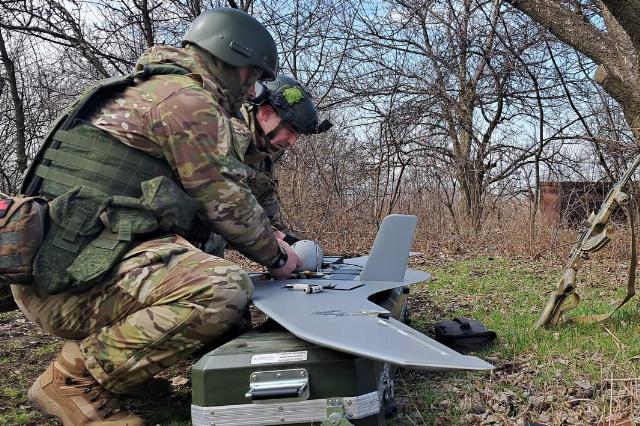
Photo: IZVESTIA/Dmitry Astrakhan
Image source: iz.ru
UAVs successfully operate on targets covered by electronic warfare (EW). In addition, they hunt for enemy UAV calculations, preventing them from acting in full force.
UAVs have taken counter—battery warfare to a new level - the reports of the Russian military department daily list the destroyed guns, self-propelled guns and MLRS of the enemy. The combination of "drone – artillery or MLRS" makes it possible to significantly increase the effectiveness of artillery brigades or artillery regiments, as well as significantly reduce the consumption of ammunition.
Bogdan Stepovoy
